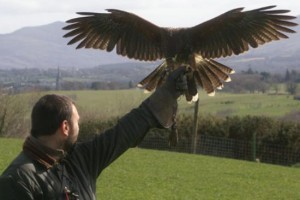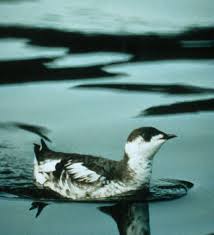Falconry taking the skies once again
Falconry, the practice of breeding and training falcons for sport, or in today’s context as a hobby for competitions.
Theories go around saying it was established in East Asia on the steppes of Mongolia from 4000 to 6000 BC or in the Persian Gulf of the Middle East by 2000 BC. Due to the nature of these claims everyone can agree that falconry has been around for a long a time.

It was originally practiced to help hunters hunt for small game for food, and was practiced by many people and in different ways around the world. According to historians, by the 6th century, falconry became increasingly popular to where it not only became a source of food or game but it became a status symbol for people, more specifically royalty. One fine example would be 17th century England; falconry there was governed by a strict set of rules wherein the breed of falcon that one can obtain and fly would depend on one’s social standing. It was finely expressed with the king being the only one allowed to fly the largest and majestic of falcons, the gyrfalcon and a Prince was allowed a female peregrine falcon. Noble women were only allowed to fly merlin and knaves while servants or children could only fly a Eurasian falcon. A lot of people even met in what came to be known as falconry clubs due to their passion for the birds and not necessarily for the status symbol.
It is not only through hunting for sport or status symbols that falcons became widely popular. In 2200 BC Chinese princes were given falcons as presents, though not for hunting it still became a large contributor as to why falcons were being taken care of and trained all around the world.
It was in the 1800s that falconry began to diminish. People started using more modern tools like firearms for hunting. There was also a time during the world wars when people started using biological weapons which scarred not only the war but the environment as well. Female falcons suddenly became unable to reproduce which lead to a decline in falcon population.
All these unfortunate events however did not mean the end for falconry, people who practiced it suddenly became more passionate for the birds and started to once again meet with each other to work out solutions and get the birds up in the air.
It was in 1920 in the Nation Geographic Magazine titled “Falconry, the sport of kings” an excellent article written by Louis Agassiz Fuertes that sparked the interest of young people. Among them were Frank and John Craighead who continued the sport of falconry and eventually became influential falconers and well know biologists.
There are now an estimated 4,000 falconers in the United States which also tallies 5000 birds , this only counts for the those in the US and not even counting those all around the world. Continuing a practice which not only gives people pleasure but gives these majestic birds a chance to truly soar through the skies and marvel at what they do best, they are raptors after all.

 These birds that are often hidden from the world’s more populated areas, will only be seen if they are in captivity because no one tends to search for them. Perhaps you do not even know that the Marbled Murrelet is a bird that even exists. There are less than 100,000 of them in the wild and you may never see their beautiful white and brown mingle colored bodies if you do not choose to search for them by boat.
These birds that are often hidden from the world’s more populated areas, will only be seen if they are in captivity because no one tends to search for them. Perhaps you do not even know that the Marbled Murrelet is a bird that even exists. There are less than 100,000 of them in the wild and you may never see their beautiful white and brown mingle colored bodies if you do not choose to search for them by boat.